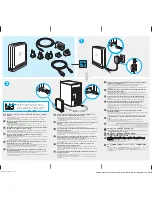
228 CS
Context
Overview
24.12 Example
24.12.1 Configure SmartNode in an Enterprise Network
Situation
Figure 24-4 shows an enterprise network with a SmartNode 2300 series with a BRI interface card in
slot 2. A PBX, a LAN, the PSTN and the company network are connected. The VoIP protocol used is
H.323. There is no gatekeeper, therefore 'direct call signaling' is used. The voice codec used is G.723,
therefore DTMF relay is enabled. Because no special dial tones have to be specified, the default tone-
set profile is used.
Call routing is specified as follows:
•
Calls from office C with number 1xx to office A with a fallback to PSTN
•
Calls from office C with number 2xx to office B with a fallback to PSTN
•
All other calls from office C to PSTN
•
Calls from office A or B with number 5xx to office C
•
All other calls from office A or B to the PSTN (local breakout)
Figure 24-4: SmartNode in an Enterprise Network
Plan the CS context
The configuration described above implies the following configuration:
•
It is very important to specify from where to get the clock source for the packaging of the
ISDN voice frames. In our example we are connected to the PSTN network and get the clock
source from the ISDN over the ISDN port 2/3.
•
We synchronize the time of the SmartNode to the ISDN time. (Refer to section 'Configure
General Settings'). To get useful system event logs it is very recommended to set the system
time!
Software Configuration Guide Release 2.10, Revision 1.00
Summary of Contents for SmartWare Release 2.10
Page 2: ...2 Legal Notice Software Configuration Guide Release 2 10 Revision 1 00...
Page 15: ...Terms and Definitions 15 Software Configuration Guide Release 2 10 Revision 1 00...
Page 218: ...218 PPP Configuration no shutdown Software Configuration Guide Release 2 10 Revision 1 00...
Page 272: ...272 Tone Configuration Software Configuration Guide Release 2 10 Revision 1 00...
















































